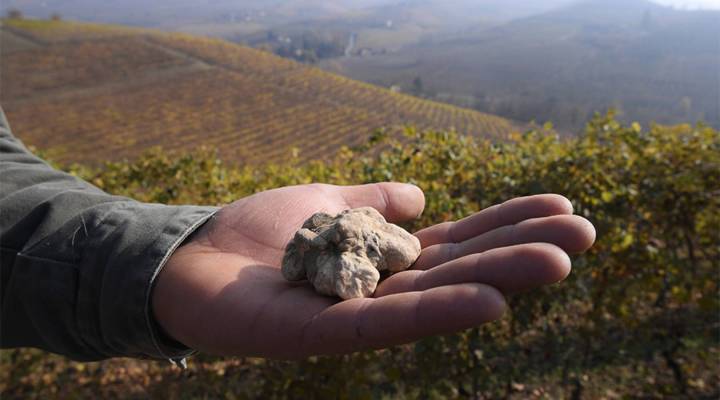
Plentiful rain brings abundant and cheaper truffles to the table
Plentiful rain brings abundant and cheaper truffles to the table

Iconic American chef Jonathan Waxman has at least three stories about the first time he tasted truffles. One involved a trip to Champagne, France, for lunch with his Austrian girlfriend, a countess (of course).
He didn’t have reservations at one of the town’s two-star restaurants, but they still managed to land a table.
“I guess because my girlfriend was gorgeous and we looked sad, they said, ‘We’ll figure something out,’” said Waxman, the owner of four restaurants, including Barbuto in Manhattan’s West Village.
They both ordered the prix fixe menu, as one does when in Champagne for brunch with an Austrian countess.
“The prix fixe that day was a mâche salad with shaved Périgord truffles on top, olive oil and sea salt, and to this day might be the best truffle dish I’ve ever eaten,” he added.
Waxman offers truffles on the menu at his restaurants and is such a fan that he spends his birthday in Piedmont, Italy, every year eating white truffles.
White truffles are relatively inexpensive this season thanks to plentiful rain in Italy.
Now considered a delicacy, truffles used to be quite common when there were more forests in the world.
“It was an aristocratic food that peasants … always knew about because they used to dig them up themselves and eat them,” Waxman said.
Truffles started to become scarce in the 1920s, perhaps due to overdevelopment or modernization, according to Waxman.
These days, some truffle varieties sell for thousands of dollars per pound, with the big ones sold off at auctions just like art. All this fuss for what is essentially the fruit of a fungus that grows underground near trees and feeds off their roots.
“The truffle is an integral part of every tree. There are always truffles in trees. Some of them are edible, some of them are not,” Waxman said.
The majority of the world’s edible truffles — an estimated 90 percent — either grow wild or are cultivated in France, Spain or Italy. While there are regional names, most truffles fall into either the black or white camp.
The white have a stronger garlicky smell, while the black tend to be more subtle and earthier.
Just like crops, truffles are sensitive to weather conditions and need a certain amount of rainfall and the right temperatures to thrive. That’s especially problematic for naturally occurring truffles that no one has figured out how to grow yet.
And it could ultimately mean the demise of truffles altogether: A new study predicts that climate change will severely reduce some truffle varieties in Europe by 2071.
“The results were really quite shocking, actually, and they were way more extreme than we expected,” said study co-author Paul Thomas, a research associate at the University of Stirling in Scotland.
The research, to be published in the March print edition of the journal Science of the Total Environment, was based on decades of truffle production and weather data from France, Italy and Spain.
“We looked at correlations between how big the yield was and what the differences were in weather and specifically in summer temperatures and summer precipitation so we could get a really good handle on how it impacts yields. And then we look at the climate change models. We incorporated that so we looked at what the weather is going to be like by 2071.”
Thomas said some countries like France, will be able to start cultivating truffles in more northerly regions. But other areas won’t be able to shift locations, because it will be too cold in some areas in winter months. He said truffle production overall in Europe will move north and east, but if the truffles die out, this will have dire consequences for some local communities.
“The truffle … contributes several hundred million euros and dollars as well to the local economy,” Thomas added.
Climate change has already interrupted the burgeoning truffle business of the Pacific Northwest of the United States.
“We had a really long, hot, dry summer, we had no rain during the fall, which is a time when the truffles actually really need rain in order to grow and mature, and we started to have a dry, dry winter,” said Alana McGee with the Truffle Dog Co., describing last season.
Fortunately, the weather cooperated this season, and she’s expecting a healthy amount of local black truffles through April.
McGee works with timber companies and local landowners to take people and sometimes their dogs on truffle foraging excursions. She also works with farms that are producing truffles in the region.
Some American chefs turn up their noses at U.S. grown truffles, but McGee said demand for local varieties is growing, mainly because they get to chef’s kitchens so much faster.
“Think about the supply chain logistics of getting truffles from Europe to the U.S. ‘Yes,’ everyone says, ‘yes, oh, we harvested it, you know, the day before and we get it to you in one day.’ That’s usually not what happens — the [imported] truffles that you usually get in the U.S. are already at least a week old,” McGee said. And truffles are a ticking time bomb of odor. The older they are, the less viable they become.
“They’re a fleeting resource,” McGee added.
One that climate change could make permanently unavailable.
The black truffle season in the United States runs through April. If you can find some, try Waxman’s recipe below.
SPAGHETTI WITH BLACK TRUFFLES AND CARROTS
8 ounces organic spaghetti
4 ounces shaved raw carrots
2 ounces black truffle (fresh only)
2 ounces sweet organic butter
1 teaspoon minced chives
1 ounce grated Gruyere cheese
2 ounces heavy cream
Cook pasta in boiling salted water.
In a 2-quart sauce pan, add one tablespoon cold water, the carrots and grate the rough exterior of truffle into saucepan. Cook covered for three minutes. Add butter.
When pasta is cooked, drain and save 1 ounce cooking water. Add pasta, cooking water and Gruyere to saucepan. Stir well.
Add cream, chives and shave half the truffles into pasta. Stir well.
Place in a heated platter and shave remaining truffles on top.
Serve hot.
(Recipe from Jonathan Waxman)
There’s a lot happening in the world. Through it all, Marketplace is here for you.
You rely on Marketplace to break down the world’s events and tell you how it affects you in a fact-based, approachable way. We rely on your financial support to keep making that possible.
Your donation today powers the independent journalism that you rely on. For just $5/month, you can help sustain Marketplace so we can keep reporting on the things that matter to you.
















